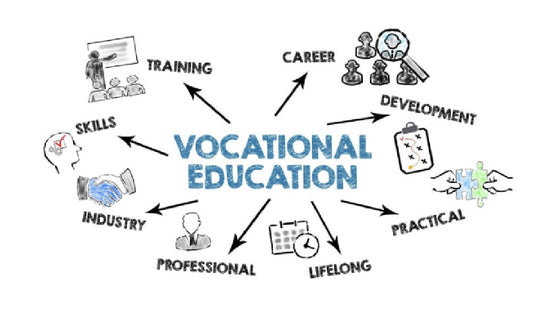As the vocational education and training (VET) sector in Australia prepares for the implementation of the revised Standards for Registered Training Organisations (RTOs), the scale of these changes is more extensive than many stakeholders may initially realise. RTO managers need to act quickly to ensure compliance, and the first step is to engage consultants or advisors to conduct a comprehensive internal audit and gap analysis. Waiting too long may result in compliance challenges, leaving providers scrambling to meet the new requirements and risking severe consequences, including fines or even closure.
This article outlines the importance of beginning the audit process now, the potential pitfalls of delaying, and what managers should consider when choosing the right support to navigate this significant transition.
Why Acting Now Is Critical: The Size of the Change
The revised Standards for RTOs represent one of the most significant overhauls in recent years, covering critical areas such as governance, training and assessment practices, student support, and workforce requirements. The scope of these changes is far greater than many RTO stakeholders anticipate, and while the regulator—Australian Skills Quality Authority (ASQA)—is expected to release training materials to assist providers, the sheer volume of work required to comply with the new standards means that early preparation is essential.
What’s Changing?
The revised Standards for RTOs introduce substantial adjustments across several areas, including:
- Governance: Stricter accountability and risk management requirements.
- Training and Assessment: Changes to trainer and assessor credentials, validation processes, and a stronger focus on industry currency.
- VET Student Support: New expectations around diversity, inclusion, wellbeing, and support services.
- Workforce Requirements: A more structured approach to workforce planning, recruitment, and ongoing professional development.
These changes are aimed at improving the overall quality of training, enhancing student outcomes, and ensuring that RTOs remain aligned with current industry expectations. However, the flip side is that RTOs face a more complex compliance landscape, with stricter auditing processes and a higher likelihood of non-compliance if these new standards are not fully understood and implemented.
The Risk of Waiting
For many RTOs, there may be a temptation to delay until ASQA releases its training materials. However, waiting too long can lead to a host of challenges:
- Limited Access to Consultants: As the deadline for compliance approaches, demand for consultants and advisors will surge. Those RTOs that delay booking their internal audit or gap analysis may find themselves unable to access the support they need, leaving them vulnerable to non-compliance.
- Overwhelmed Providers: The transition to the revised standards is a massive undertaking. By waiting too long, RTOs may find themselves overwhelmed by the workload required to implement changes across governance, workforce, and student support systems.
- Non-Compliance Penalties: RTOs that are not compliant with the revised standards when they come into effect face the risk of severe consequences, including fines, reputational damage, or even closure. ASQA has shown in the past that it will take action against non-compliant providers, and there is no reason to believe this will change with the new standards.
- Complex Changes: The scope of the revised standards is extensive, and some RTOs may underestimate the complexity of the changes. Without a thorough internal audit and gap analysis, it can be easy to overlook areas that need attention, leading to compliance risks down the line.
The Importance of Internal Audits and Gap Analysis
An internal audit and gap analysis are essential tools for identifying where an RTO’s current practices fall short of the new requirements. They offer a structured approach to understanding the specific areas where adjustments are needed and provide a roadmap for achieving compliance before the deadline.
What Is an Internal Audit?
An internal audit is a systematic review of an RTO’s processes, procedures, and systems to ensure they meet the revised standards. It involves examining everything from governance structures to training delivery and workforce management to ensure alignment with the updated requirements.
- Governance and Risk Management: Do the governance structures support accountability, integrity, and continuous improvement? Are risk management processes robust enough to identify and mitigate risks to students and staff?
- Training and Assessment: Are the assessment tools fit for purpose? Are trainers and assessors maintaining the necessary credentials and industry currency? Does the training align with industry expectations?
- Student Support: Are the support services sufficient to meet the needs of diverse student cohorts? Is the RTO proactive in supporting student wellbeing and inclusion?
- Workforce Planning: Does the RTO have a strategic workforce plan in place? Are staff engaged in continuous professional development to maintain their skills and knowledge?
What Is a Gap Analysis?
A gap analysis compares an RTO’s current practices with the requirements of the revised standards, identifying areas where changes need to be made. This process is critical because it highlights specific compliance gaps and provides actionable steps to close them before the revised standards take effect.
A gap analysis will typically focus on:
- Identifying non-compliance with specific standards.
- Developing strategies to address areas where current practices do not meet the new requirements.
- Prioritising actions to ensure that high-risk areas are addressed first.
Why RTOs Need Consultants or Advisors
Given the complexity of the revised standards, consultants or advisors who specialise in VET compliance can provide invaluable support. These professionals bring expertise in understanding regulatory requirements, conducting internal audits, and preparing RTOs for compliance with the revised standards.
The Benefits of Hiring Consultants or Advisors
- Expert Guidance: Consultants are experts in interpreting regulatory requirements and can help RTOs navigate the complexities of the revised standards.
- Time Efficiency: Conducting a thorough internal audit and gap analysis requires significant time and effort. Consultants can expedite this process, allowing RTO managers to focus on other aspects of running the organisation.
- Objective Insights: An external consultant can provide an objective review of an RTO’s practices, identifying compliance risks that may be overlooked by internal staff.
- Tailored Recommendations: Consultants can offer tailored recommendations for addressing compliance gaps, ensuring that the RTO’s systems and processes are fully aligned with the new standards.
- Access to Best Practices: Consultants often have experience working with multiple RTOs and can provide insights into best practices for compliance and operational efficiency.
The Risk of Delaying Consultant Engagement
As the deadline for compliance with the revised standards draws closer, demand for consultants and advisors will spike. Large consultancy firms may already be turning away clients due to overwhelming demand, and smaller providers may also struggle to secure the support they need if they wait too long to book.
Fixed Price Quotations: Planning Ahead
One of the advantages of engaging consultants early is that many offer fixed-price quotations for internal audits and gap analysis services. This allows RTO managers to budget for compliance preparation without the uncertainty of fluctuating costs.
By locking in a fixed price now, RTOs can plan ahead, ensuring they have the necessary resources in place to conduct a thorough audit and close any compliance gaps before the revised standards come into effect.
Will ASQA Be Ready? Can Providers Wait?
There is an argument that RTOs might want to wait until ASQA releases official training and materials related to the revised standards. However, this approach carries several risks:
- Timing of ASQA’s Support: It is uncertain when ASQA will release its training materials and support resources. Delaying internal audits until these materials are available may leave RTOs with insufficient time to implement necessary changes.
- Lack of Personalisation: While ASQA’s materials will be helpful, they are unlikely to provide the personalised support and tailored recommendations that consultants and advisors can offer. Each RTO is different, and a one-size-fits-all approach may not address the unique challenges each provider faces.
- High Demand for Support: As mentioned earlier, waiting too long may result in a shortage of consultants and advisors, leaving RTOs without the support they need. Early preparation is key to securing access to the best compliance experts.
Lessons from SRTO 2015: Don’t Leave It Too Late
The last time significant changes to the Standards for RTOs were introduced in 2015, many providers delayed their compliance efforts, resulting in a wave of non-compliance. RTOs that left it too late found themselves facing penalties, and many were forced to close due to their inability to meet the new requirements.
History could repeat itself if RTOs do not start preparing for the revised standards now. The changes are significantly larger than most stakeholders expect, and waiting too long to begin the internal audit and gap analysis process could leave providers scrambling to meet the deadline.
What to Expect: Will ASQA Start Auditing Providers?
One of the questions on the minds of many RTO managers is whether ASQA will be actively auditing providers when the revised standards come into effect. Based on previous experience, it is highly likely that ASQA will take a proactive approach to auditing providers, particularly in the early stages of the implementation of the new standards.
In the aftermath of SRTO 2015, ASQA conducted numerous audits, and many providers found themselves non-compliant, resulting in fines, sanctions, and even closures. There is no reason to believe that ASQA will adopt a more lenient stance this time around.
Providers who are not fully compliant with the revised standards when they take effect risk being caught in ASQA’s audit net. The best way to avoid this is to start now by booking consultants or advisors to conduct an internal audit and gap analysis.
Start Now, Avoid Non-Compliance
The revised Standards for RTOs represent a massive change in how vocational education and training providers operate. RTO managers must take proactive steps to ensure compliance, and the first step is to engage consultants or advisors to conduct an internal audit and gap analysis.
Waiting too long to start this process is a huge risk. As deadlines approach, demand for consultants will increase, leaving many providers unable to access the support they need. Don’t repeat the mistakes of the past—start now, ensure compliance, and protect your RTO from the potential consequences of non-compliance.
By taking early action and investing in a thorough audit and gap analysis, RTO managers can position their organisations for success under the revised standards, ensuring they remain compliant, competitive, and capable of delivering high-quality training to students.
For all your compliance needs, contact us at 1800 266 160 or email us at info@caqa.com.au. We can assist with all of your compliance requirements, professional development and any other needs you may have at your RTO.


































